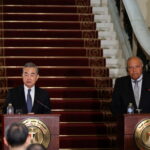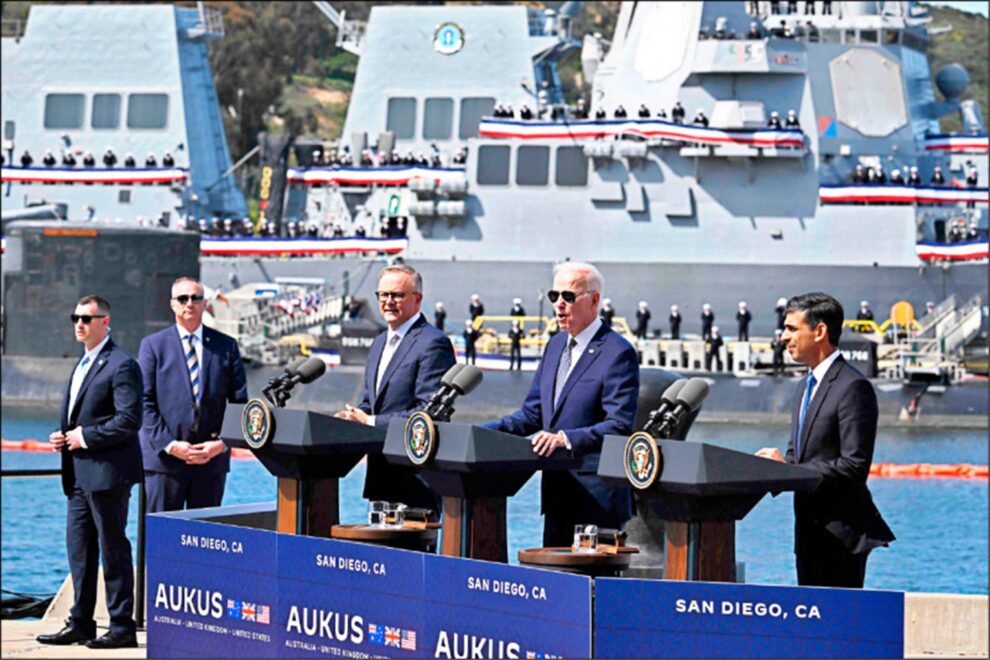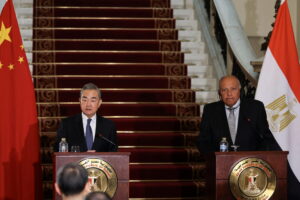According to the joint statement issued by the United States, Britain and Australia after the meeting, a phased plan will be adopted in order to deliver conventionally armed nuclear-powered submarines to Australia as soon as possible. From the early 1930s, the United States will sell three “Virginia” class nuclear submarines to Australia. If necessary, it may sell two more in the future. Biden emphasized that the submarines purchased by Australia will be nuclear-powered submarines, but will not be equipped with nuclear weapons. According to Reuters, according to the agreement, the United States and the United Kingdom will also deploy submarines in Western Australia to help train Australian military personnel, and the relevant rotational deployment will begin as early as 2027.
In addition, the United States, Britain and Australia will integrate the technologies of the three countries, use British design and American combat systems, and jointly develop a new type of nuclear submarine (SSN-AUKUS). In the future, the United Kingdom and Australia will use SSN-AUKUS as their future submarine, and the two countries will start building this type of submarine in their domestic shipyards within 10 years. According to the plan, the UK will deliver the first SSN-AUKUS submarine to the Royal Navy by the end of the 2030s, while Australia will deliver the first SSN-AUKUS submarine to the Royal Australian Navy in the early 2040s. Australian military officials said the entire plan is expected to be completed in 2055 at a cost of $245 billion. By the 2060s, the Royal Australian Navy will have eight SSN-AUKUS submarines built in Adelaide.
The Australian government’s insistence on deploying nuclear submarines has been questioned domestically. Some lawmakers believe that this move may “burn the fire.” Australian Green Party MP Keith Blakey told the ABC: “It (nuclear submarine program) could make us a potential military target … It is a potential sovereign risk for Australia to free ride on the US and the UK The “Sydney Morning Herald” said on the 14th that Australian Deputy Prime Minister and Minister of Defense Mars said on Tuesday that the procurement cost of nuclear submarines will account for 0.15% of GDP every year in the next few years, but for ordinary Australians who are more concerned about the cost of living, It’s hard to be happy with that number. In addition, regarding how to deal with the large amount of nuclear waste produced by nuclear submarines, the Australian Financial Review quoted Dave Sweeney, an analyst at the Australian Environmental Protection Foundation, warning that the waste from nuclear submarines will still be toxic and carcinogenic for tens of thousands of years. , “The Orcus Accord is by far the biggest threat that Australia will become the world’s worst nuclear waste dump”.
The “Ocus” nuclear submarine program has also sparked criticism from Southeast Asian countries. Hasanuddin, a senior member of the Indonesian ruling party, said on the 14th that Australian nuclear submarines should not use Indonesia’s sea lanes because “‘Ocus’ was created for combat.” Indonesia expects Australia to continue to fulfill its obligations under the NPT and IAEA safeguards. Hasanuddin emphasized: “If a submarine provokes China in the future, it will not be welcomed.” The Malaysian Ministry of Foreign Affairs issued a statement on the same day, saying that it hopes that all parties will fully respect and abide by Malaysia’s national system for nuclear submarines navigating in its waters, and Stressed that any provocations that may trigger an arms race or affect peace and security in the region should be avoided.
Wang Wenbin said at a regular press conference of the Ministry of Foreign Affairs on the 14th that China has repeatedly emphasized that the United States, Britain and Australia have established a “tripartite security partnership” to promote cooperation in nuclear submarines and other cutting-edge military technologies. This is a typical Cold War mentality and will only stimulate an arms race. , undermine the international nuclear non-proliferation system, and damage regional peace and stability. Before all parties reach a consensus, the United States, Britain, and Australia should not carry out nuclear submarine cooperation, and the IAEA Secretariat should not negotiate and sign safeguard arrangements with the three countries without authorization.
Yu Lei, chief researcher at the Pacific Islands Research Center of Liaocheng University, told the Global Times reporter on the 14th that in the tripartite cooperation, Australia is only one of the funders and users, and the core technology and manufacturing are still mastered and produced by the United States and Britain. It can be seen that Australia has done “Big head”. Military expert Song Zhongping said that the most interesting point about the details announced this time is that a nuclear submarine production base will be built in Adelaide, southern Australia, as well as a maintenance and support base. “This means that Australia needs to spend hundreds of billions of dollars to build a nuclear submarine base, which can produce not only Australian submarines, but also American and British submarines. Not only that, Australia also needs to build the base into a maintenance support base, capable of maintaining US , Britain’s ability to use its nuclear submarines in the Asia-Pacific region to spend its own money to serve the United States and serve the “Indo-Pacific Strategy” of the United States. This is unprecedented.
” U.S. defense budget hits multiple “new highs”
The Biden administration of the United States announced last week the federal government budget for fiscal year 2024 totaling US$6.8 trillion, of which the defense budget reached a record high of US$842 billion, an increase of US$26 billion from the previous year. The Pentagon held a press conference on the 13th to announce the details of the budget, saying that the budget “seriously reflects the US’s emphasis on strategic competition with China.” U.S. Deputy Defense Secretary Hicks declared at a press conference that the goal of the U.S. defense budget is to ensure that China “understands the risks of war.”
Reuters reported that US$170 billion in the US defense budget will be used for weapons procurement, expanding the procurement of advanced missiles such as extended-range joint standoff air-to-surface cruise missiles and advanced medium-range air-to-air missiles, and will purchase F The number of -35 fighters increased to 83. The budget also provides the Pentagon with the largest research and development funding in history, and plans to allocate $145 billion for the development of new weapons such as hypersonic missiles. In addition, about 9.1 billion U.S. dollars in the budget are used to support the Pentagon’s “Pacific Deterrence Program”, the highest in history. However, the “Wall Street Journal” said on the 14th that analysts expect the defense budget to encounter major resistance in Congress in view of the wide-ranging differences in Congress on the federal budget deficit.
The spokesperson of the Chinese Ministry of Foreign Affairs has repeatedly emphasized that playing the “China card” has become a necessary excuse for the United States to increase military spending and expand its military power. The US’s so-called “response to China’s challenge” contains the evil intention of seeking unlimited hegemony and absolute security, and containing China.
Li Haidong, a professor at the Institute of International Relations at the China Foreign Affairs University, told the Global Times reporter on the 14th that the United States blindly believes in military power in its security concept and maintains its own sick and unhealthy hegemony at the expense of other countries and regional security. The objective fact that the United States is the biggest threat to global security.
Behind the Stimulus Arms Race is Business
While provoking a regional arms race, the United States has increased arms exports. According to Reuters, the latest data released by the Stockholm International Peace Research Institute in Sweden on the 13th showed that in the five years to 2022, the actual delivery of global arms fell by 5.1% year-on-year, but the US’s share of the global arms export market rose from 33% to 40%. Data show that from 2018 to 2022, in the Asia-Pacific region, arms imports from South Korea, Japan and Australia soared by 61%, 171% and 23% respectively. The main supplier is the United States. All three countries are purchasing long-range strike weapons , such as advanced fighter jets and missiles, etc. In the Middle East, as many as 54% of weapons are imported from the United States.
Behind the surge in arms orders is the soaring stock prices of US military giants. In stark contrast to the 10% drop in the US Dow Jones Industrial Average for the whole of 2022, the stock price of Lockheed Martin, the “leader” of the US military industry, rose 37% for the whole of 2022. Shares of Luhrmann surged nearly 40%, while shares of Raytheon rose nearly 17%. Franklin Spinney, who has worked in the Office of the Secretary of Defense of the United States for 26 years, recently published an article saying that the US military-industrial complex used this Russia-Ukraine conflict to exaggerate the fear of Russia, aiming to create an opportunity for a new round of arms spending, and will continue to do so. long-term profit in sub-conflicts and other regional conflicts.
Military expert Wei Dongxu told the “Global Times” reporter on the 14th that the United States is currently building an “arms alliance” in its military alliance system. American arms dealers make a lot of money. Song Zhongping said that in order to fight against China and Russia, the United States has made two-handed preparations. While creating regional hotspot issues and doing a lot of arms business, it is creating a regional arms race and mobilizing its allies to jointly fight against China and Russia. We cannot take it lightly. Whether it is in terms of scientific and technological capabilities, economic capabilities, or military capabilities, we must be solidly prepared to effectively respond to the comprehensive challenges launched by the United States against China.
[Global Times special correspondents in the United States, Australia, and the United Kingdom Feng Yaren, Da Qiao, Ji Shuangcheng, Global Times reporters Ding Yazhi, Guo Yuandan, Liu Yupeng, Zhen XiangSource: cj.sina
















